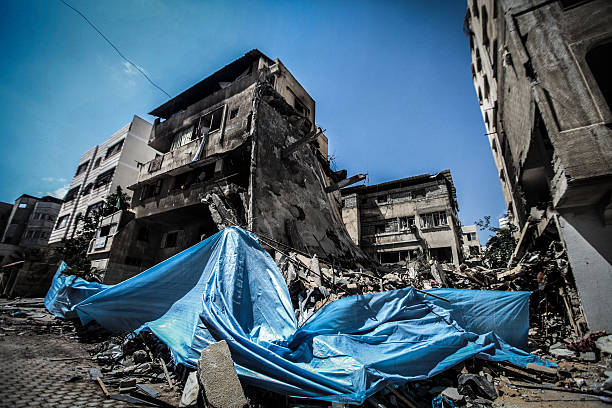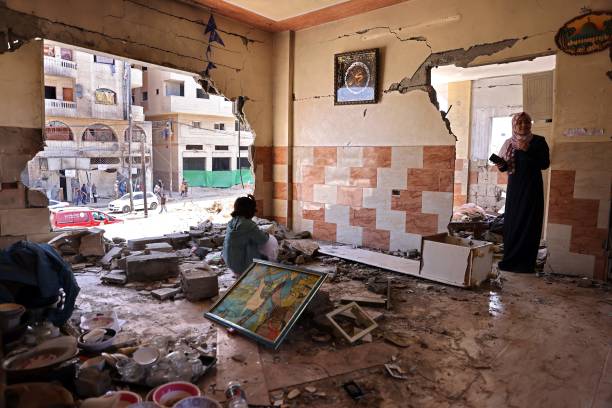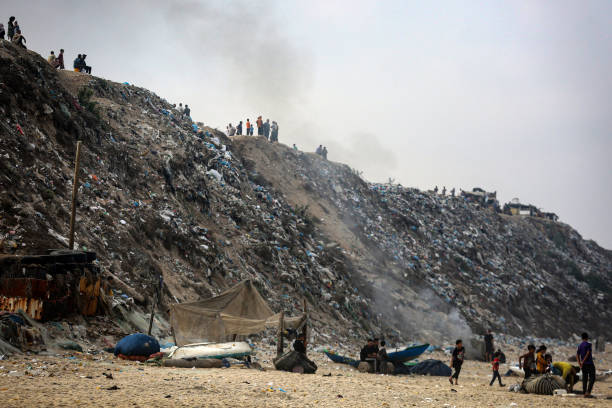Discover the true extent of devastation caused by the war in Gaza. Explore the aftermath and witness the resilience of a community navigating the challenges of rebuilding amidst profound destruction.


Discover the true extent of devastation caused by the war in Gaza:
According to data from the Palestinian Public Works and Housing Department, the UN Office for the Coordination of Humanitarian Affairs (OCHA) reported that Israeli attacks had resulted in the destruction of over 41,000 housing units and damage to over 222,000 housing units. Overall, it stated that there had been reported damage or destruction to at least 45% of Gaza’s housing units.
Nov. 12, after visiting the Gazan town of Beit Hanoun with an Israeli reporter, the Israeli military reported that “barely a single inhabitable building remains standing”. Before the war, the population was over 52,000.
HOSPITALS AND SCHOOLS
According to an OCHA report dated Nov. 15, 279 educational facilities—more than 51% of the total—had allegedly sustained damage, making it impossible for Gaza’s 625,000 students to receive an education.
The Ministry of Health in Gaza reports that as of November 16, only nine of the 35 hospitals in the enclave were operating at a partially operational capacity. The remainder have stopped providing official medical care.
OCHA reported that severe drug and blood product shortages had been reported and that 55 ambulances in Gaza had been damaged.
WATER AND SANITATION

70% of the population in southern Gaza did not have access to clean water on November 16 due to a fuel shortage, according to the U.N. Palestinian Refugee Agency (UNRWA).
The two water pipelines from Israel were operational, but the seawater desalination plant in Khan Younis, south, was only using five percent of its capacity, according to UNRWA. The Israeli pipeline and the water desalination plant are not operating in the northern part of the territory.
According to OCHA, the majority of Gaza’s 65 sewage pumps were not functioning, and in certain places, raw sewage had begun to run into the streets.
FOOD SECURITY, FOOD SECURITY And TELECOMS
According to OCHA, structural damage, a lack of fuel, water, wheat flour, and other factors have prevented bakeries in the northern part of Gaza from operating since Nov. 7.
It stated that on November 15, Gaza’s last operational mill was destroyed. Before the war, 500 trucks carrying supplies and food would arrive in Gaza every day on average. After October 7th, all imports were stopped and only started up again on October 21st. 1,139 trucks carrying humanitarian aid had entered Gaza between then and November 14.
Telecommunications in Gaza ceased operations on November 16 due to a shortage of fuel for generators. According to OCHA, on November 14, multiple communication infrastructures in south Gaza were struck and damaged. According to OCHA, blackouts put civilians’ access to life-saving aid in jeopardy. UNRWA stated that as of Nov. 17, it was unable to oversee or plan humanitarian relief convoys because of the communication outage.
Financial Consequences of the Conflict in Gaza: Analyzing the Economic Ramifications
About 390,000 jobs have been lost since the beginning of the conflict, according to a joint report released on November 5 by the United Nations Development Programme (UNDP) and the Economic and Social Commission for Western Asia (ESCWA).
Gaza’s socioeconomic status was already extremely bad prior to the conflict; in 2020, the estimated percentage of the population living in poverty was 61%. Depending on how long the war lasts, the U.N. agencies predicted that poverty would increase by 20% to 45% in their preliminary estimate. Additionally, they predicted that Gaza’s GDP would be negatively impacted by the conflict in 2023 by 4% to 12%.








